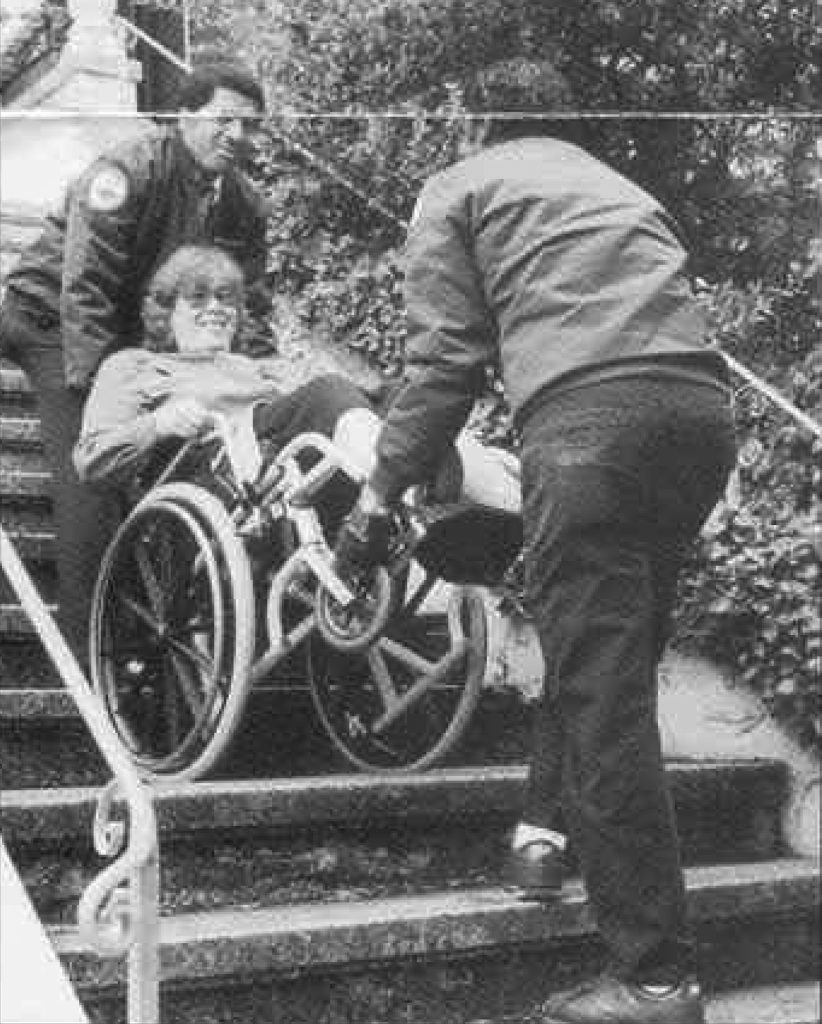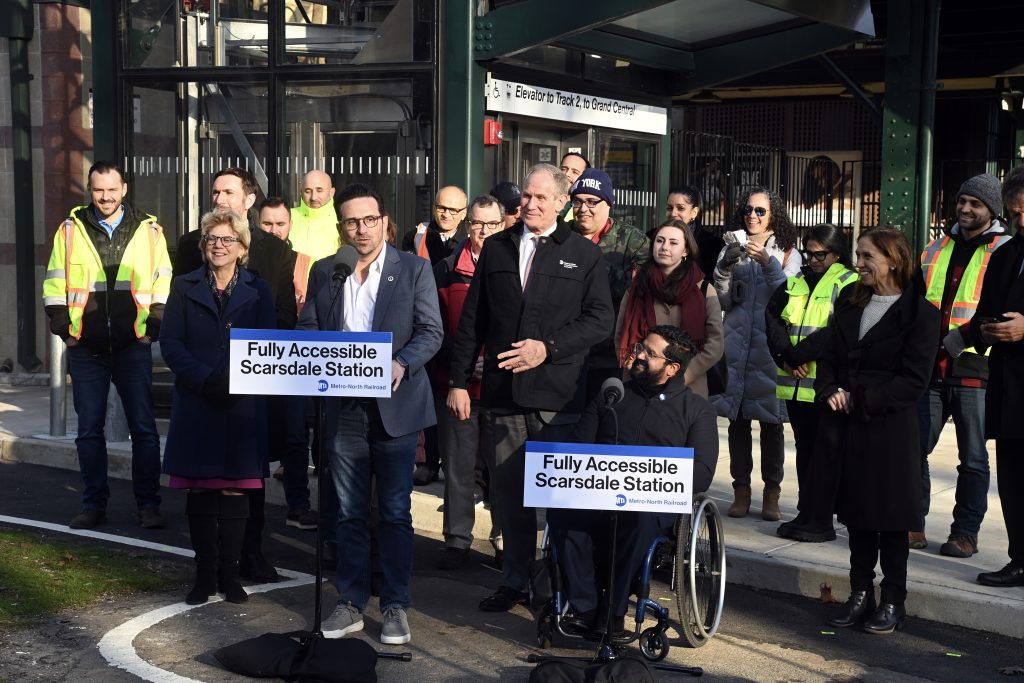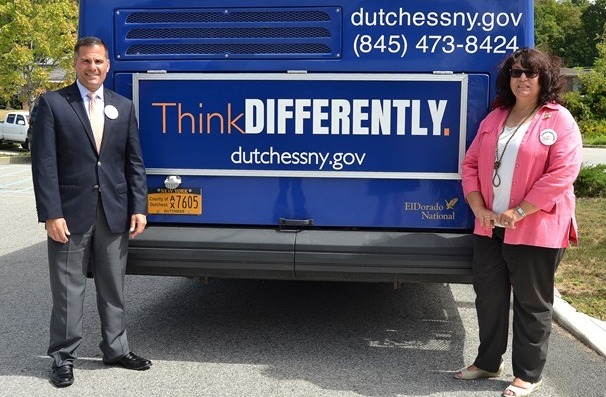35 Years of the ADA Part 1: Public Transit Milestone and the Road Ahead
By Eileen (Collins) Turvey, MPA, CADAC | 7/25/2025
EILEEN (COLLINS) TURVEY, MPA, CADAC
Director, Accessible Transportation Programs
Executive Sponsor, TriMet-ABLE Employee Resource Group
TriMet
Portland, OR
Thirty-five years ago on July 26, the Americans with Disabilities Act (ADA) set a transformative standard: equal access to public services, including public transit, for people with disabilities. For transit agencies across the country, this landmark legislation was more than a mandate, it was a call to action. It sparked a long-overdue commitment to rethink, redesign, and rebuild systems that had, for too long, excluded millions of Americans.

As public transit leaders, we recognize that the ADA was not the finish line but the beginning of a collective journey: a journey that has led to profound improvements in the way we design, operate, and deliver bus, rail, and paratransit services across the United States, and one that continues today.
The Early Days: A System in Need of Change
In 1990, most public transportation systems were not accessible. Buses lacked lifts or ramps; rail platforms had gaps and steep steps; and paratransit services were inconsistent or nonexistent. The ADA set a clear expectation: all new vehicles must be accessible, and agencies must provide complementary paratransit service for people who cannot use fixed-route options due to a disability.
From large metropolitan areas to rural communities, agencies began the hard work of transforming their fleets and services. This was not just a compliance exercise; it required a cultural shift. It demanded deep engagement with disability communities and the development of policies and practices that centered dignity, autonomy, and equity.
Progress Across the Nation
Today, that transformation is visible everywhere. In cities like Chicago and New York, major investments in elevator installation and accessible station design are expanding rail access for millions. In Los Angeles, low-floor buses and digital signage support more inclusive boarding and communication for all riders. Smaller agencies in places like Missoula; Montana; and Chapel Hill, North Carolina, have led the way in rider-centered innovations, from on-demand paratransit to integrated travel-training programs.

Technology has played a major role in advancing access. Transit apps now offer real-time trip planning with accessibility filters. Automated stop announcements, improved signage, and wayfinding support for riders who are blind or low-vision are becoming standard. And customer service teams are receiving training that prioritizes respect and responsiveness to a wide range of mobility and communication needs.
As Christian Kent explains, from his time at the Washington Metropolitan Area Transit Authority (WMATA), “Many of the service improvements to paratransit that were made during my tenure at WMATA had a tremendous public impact. The ridership doubled in just four years as unmet demand was absorbed into the service. Technology and fleet upgrades accommodated more riders more efficiently, and enhancements to fixed-route accessibility enabled cost savings on paratransit and increased fixed-route ridership.”
Leadership Rooted in Equity
True leadership means building not only for the present, but also for the future. Public transit agencies are increasingly elevating people with disabilities into leadership roles, advisory committees, and staff positions where their lived experience informs system-wide design and policy.
Ron Brooks was a teenager when he lost his sight. He learned how to read, write, and navigate his community as a blind person and take buses and trains on his own. In 1993, he followed his growing passion for public transit into an entry-level planning position with the Bay Area Rapid Transit (BART) District in Oakland, CA. Since that time, Brooks has spent 27 years working in the public transit industry for both public agencies and private companies, all focused on improving transportation for older adults and people with disabilities. In 2019, he joined American Logistics, where he is leading the company’s efforts to introduce lower-cost, on-demand transportation that includes more freedom and flexibility for customers.
“When I was a little boy, I wanted to go to the Moon or become a pilot,” Brooks says. “I always thought that my career in public transportation was sort of accidental, but now I know better. Back then, when I was dreaming of the Moon and the stars, I wanted to go places and pave the way for others. As it turns out, that’s what I was doing every day working in the transit industry.”

Brooks’ company, Accessible Avenue, does just that. “We are a resource for agencies and organizations who want to make sure that all people, including those who have disabilities, can make those exciting journeys together,” he touts.
TriMet’s Commitment to Inclusive Transit
At TriMet, the ADA launched a new era of listening, learning, and continuous improvement. Every TriMet bus is wheelchair accessible with ramps, securement areas, and automated announcements. Our bus stops have digital displays with text-to-speech devices to relay service information to riders who are blind, low-vision, or non-native English speakers. Our MAX light rail system offers level boarding, tactile wayfinding, automated stop announcements, and priority seating. TriMet’s LIFT paratransit service provides nearly 800,000 rides annually, offering door-to-door service for eligible riders with disabilities, and now, same-day, on-demand service for eligible riders, at the same price as fixed-route service.
We’ve also worked to innovate. Human wayfinding research, developed with the blind and low-vision community in partnership with Portland State University’s Orientation and Mobility Program, is reimagining station design to be intuitive, safe, and accessible for all riders. In addition, our Committee on Accessible Transportation (CAT), made up largely of riders with disabilities, ensures community voices are central to every accessibility decision we make.

Through APTA’s Access Committee and partnerships like the National Aging and Disability Transportation Center, Easter Seals Project Action, and many more, public transit agencies are exchanging ideas, tools, and technologies that accelerate inclusive innovation.
As Christian Kent reflected, “I started as a bus operator in college and fell in love with transit. It turned into a rewarding career opportunity in both the private and public sectors. My first major management role was to oversee a paratransit operation; and it was also my introduction to the disability community. Working in paratransit is being a part of the solution, and I have reveled in seeing people with disabilities empowered and helping to bring about changes they had wanted for years. Not only have I been able to improve accessible services, but also to launch the leadership careers of others; pass on institutional knowledge to new generations; and shape policies that benefit millions of people across our nation.”
The Journey Continues
As we commemorate 35 years of the ADA, we celebrate the incredible progress made, with the humility and clarity that our work is far from finished.

In his confirmation hearing for Administrator of the FTA, Marcus Molinaro stated, “In my career, I’ve focused on creating opportunities for individuals with disabilities. As Dutchess County Executive, our ThinkDIFFERENTLY initiative, launched in 2015, changed how government serves people—not through rhetoric, but through action. We made universal accessibility a core value. If confirmed, that same commitment to those with physical, developmental, and intellectual disabilities will shape every aspect of my work at the FTA—for daughters like my own and the millions of Americans like her.”
Equity is not static; accessibility is not a checkbox. The riders of today and tomorrow deserve systems that reflect the full diversity of human experience. At public transit agencies across the country, we remain committed to a future where public transit is truly public—welcoming, reliable, and accessible for everyone.
From intelligent assistive devices to fully integrated smart city infrastructures, the landscape of accessible transportation is finally evolving at an impressive pace. This development is not only ensuring that people with disabilities have greater access to transportation but also making these systems more efficient and user friendly for all riders.
We are not done yet, but we are proud to keep moving forward, together.